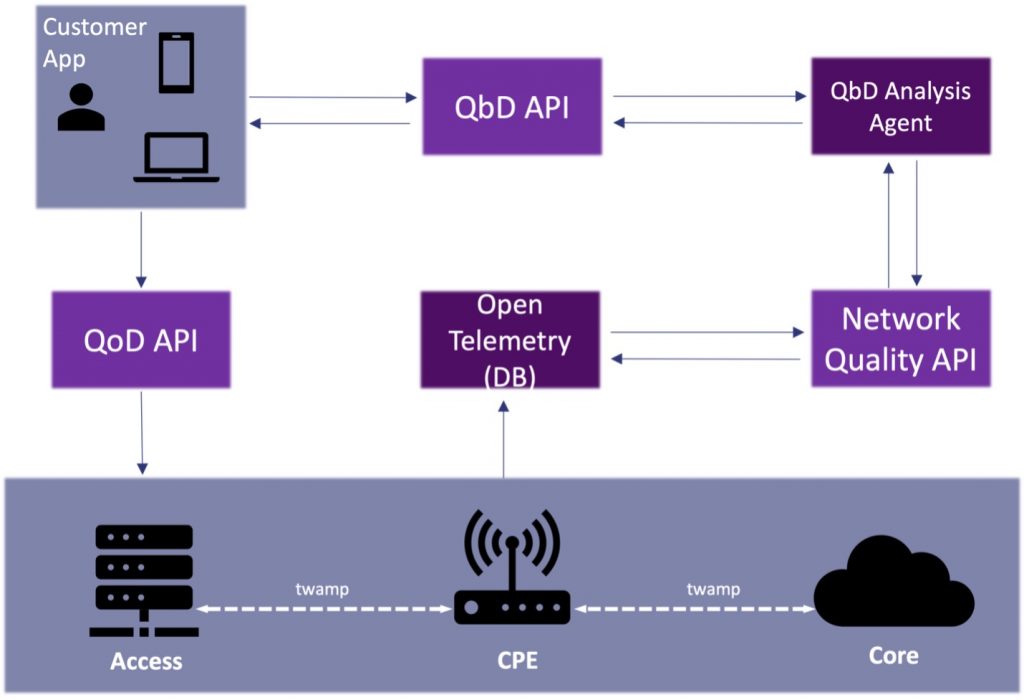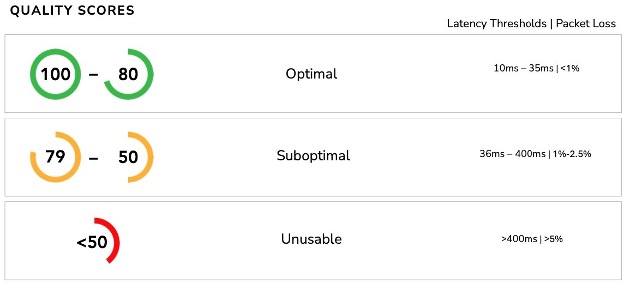Service providers and application developers are always striving to deliver the best possible experience to their end users. Optimizing network performance is critical. But in the era of isolated architectures—DOCSIS®️, optical, and mobile—traditional network management can be challenging.
Additionally, the lack of visibility between applications and the underlying network can make troubleshooting potential network vulnerabilities extremely difficult at the individual user level. The situation is further complicated for application developers, who must navigate different network conditions and constraints, which can cause issues that can arise from within the applications themselves.
Recognizing these challenges, CableLabs introduced Quality by Design (QbD) within a Network as a Service (NaaS) framework. Our goal is to standardize and simplify network management.
What is quality by design?
The QbD specification is designed to improve network performance and user experience through real-time monitoring and automatic problem resolution. By leveraging a set of standard APIs, QbD facilitates two-way communication between applications and the network. Applications can thus act as network monitoring tools, sharing real-time key performance indicators with the network. Figure 1 illustrates the QbD design.

Figure 1: QbD overview
Not only does this approach provide a clear view of user experiences, it also enables rapid identification and resolution of network issues by correlating application KPIs with network performance data. In this way, QbD quickly addresses any issues, whether they are rooted in the network or the application. Customer events are triggered based on quality score, as shown in Figure 2.

Figure 2: Sample video conferencing application limits
QbD enables rapid diagnosis and resolution of network issues. Automated solutions can then be deployed to address these issues immediately, minimizing outages and maintaining high quality of service. The inclusion of automated solutions reduces the occurrence of excessive network alarms and ensures rapid response to suboptimal application performance.
Impact on end users
Many factors can lead to end users experiencing poor quality and suboptimal application performance. QbD helps address these potential situations by correlating application events with potential underlying network events to determine where the root cause of the problem is occurring by exchanging key performance indicators between the application and the network.
This approach enables both applications and networks to respond dynamically to changing conditions, enhancing customer experience. By turning applications into network quality monitoring agents that actively participate in network management, QbD promotes a smoother, higher-quality user experience.
CableLabs’ Role in Quality by Design
CableLabs has been at the forefront of developing networking technologies and standards, and our role in developing and implementing QbD is a testament to our commitment to innovation. We recognized the limitations of traditional network management, where DOCSIS, optical, and mobile networks were often managed on separate platforms with different processes, making it difficult to determine when an individual customer was not getting the level of service they wanted.
QbD APIs have been introduced to CAMARA, a Linux Foundation project that aims to standardize intent-based APIs for the broader communications industry. We hope to have the first release published in the near future. This capability turns applications into proactive participants in network monitoring and management, providing a more detailed and accurate view of network performance.
Additionally, CableLabs has led the effort to integrate automated response mechanisms into the QbD framework. This automation is critical to reducing the time and effort required to identify and resolve network issues. By leveraging machine learning algorithms and advanced analytics, QbD can correlate application KPIs with network telemetry data, pinpointing potential issues with high accuracy.
Another key aspect of CableLabs’ role in QbD is to foster a collaborative ecosystem between network operators and application developers. By providing a unified framework and tools, CableLabs encourages these stakeholders to work together, share ideas, and develop best practices to improve network and application performance. This collaboration not only enhances the capabilities of individual entities, but also contributes to a more robust and resilient network infrastructure.
How to get engaged
As the digital landscape continues to evolve, ensuring optimal network performance and seamless user experiences is becoming increasingly critical. We invite network operators, application developers, and other stakeholders to explore the transformative potential of QbD. Members can apply to join our NaaS working group.
By adopting QbD, you can revolutionize your network management practices, deliver unparalleled user experiences, and stay ahead in a competitive market.
Visit CableLabs to learn more about how to implement QbD within your network infrastructure and join the movement towards a more integrated, efficient and responsive digital future. Let’s work together to set new standards for network quality and user satisfaction!




